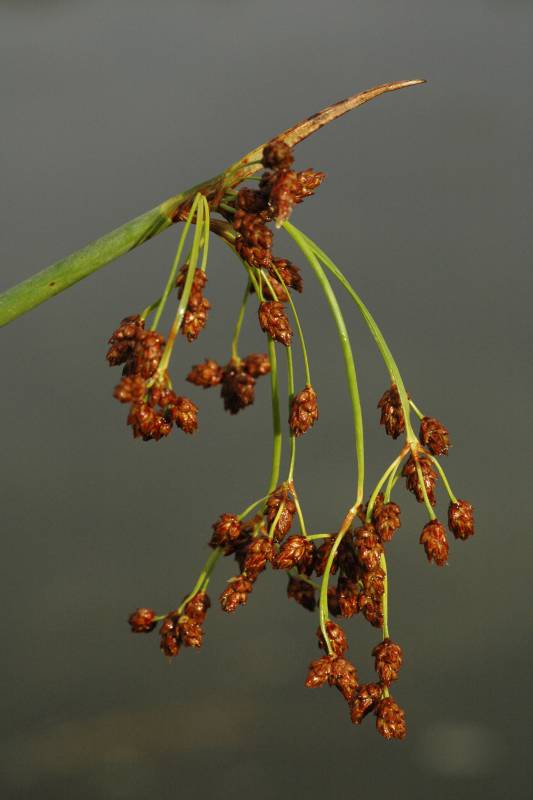Hosted by the University of Washington Herbarium, Burke Museum
Publication: Verh. K.K. Zool.-Bot. Ges. Wien. 38(Sitzungsber.): 49. 1888.
Origin: Native
Herbarium search: CPNWH
Notes: FNA23: "Schoenoplectus validus, described from the Caribbean, and S. tabernaemontani, described from Europe, are here treated as one variable, cosmopolitan species without infraspecific taxa, pending further studies (J. Browning et al. 1995b; S. G. Smith 1995). Most North American plants have spikelets with reddish papillae or prickles on the scales, whereas some plants of coastal and boreal North America closely resemble most plants of northwestern Europe and southern Africa in their densely reddish prickly-papillose scales and are similar to the type of Scirpus glaucus J. E. Smith.
Schoenoplectus tabernaemontani, S. acutus, S. heterochaetus, S. lacustris, and S. triqueter belong to the very difficult S. lacustris complex. The entire complex except S. triqueter was treated as the single species Scirpus lacustris (T. Koyama 1962b). Many Old World authors treat Schoenoplectus tabernaemontani as S. lacustris var. tabernaemontani or subsp. glaucus.
Much of the local infraspecific variation in the Schoenoplectus lacustris complex is probably because of hybridization. Some studies support the recognition of separate species in this group (J. Browning et al. 1995b). Hybrids in North America include S. acutus × S. tabernaemontani, widespread and common, especially in the east; S. acutus × S. heterochaetus = S. ×oblongus (T. Koyama) Soják, widespread but uncommon; S. heterochaetus × S. tabernaemontani = S. ×steinmetzii (Fernald) S. G. Smith, eastern and most uncommon; S. tabernaemontani × S. triqueter = S. ×kuekenthalianus (Junge) Kent, lower Columbia River in Oregon and probably Washington; and S. acutus var. occidentalis × S. californicus, local in California. Except for its trigonous culms, S. triqueter is very similar to the S. lacustris complex and freely hybridizes with S. tabernaemontani, both in North America and Europe."
Last updated 3/15/2022 by David Giblin.

